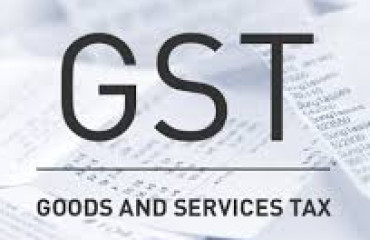
Revenues from the goods and services tax (GST)—the countrywide indirect tax since June 2017—have been on a tear. In October, GST revenues touched ₹1.5 trillion, the second-highest monthly collection ever, after April 2022. Monthly GST revenues have exceeded ₹1.4 trillion for eight straight months, a statistic the central government has been playing up. Why have GST revenues risen this fast, outpacing even direct tax collections? Are there certain segments pulling performance? And what do GST trends tell us about the regional spread of economic activity post-covid?
Revenues from the goods and services tax (GST)—the countrywide indirect tax since June 2017—have been on a tear. In October, GST revenues touched ₹1.5 trillion, the second-highest monthly collection ever, after April 2022. Monthly GST revenues have exceeded ₹1.4 trillion for eight straight months, a statistic the central government has been playing up. Why have GST revenues risen this fast, outpacing even direct tax collections? Are there certain segments pulling performance? And what do GST trends tell us about the regional spread of economic activity post-covid?
Data suggests there is a boost that goes beyond circumstantial factors like high inflation. In the last eight months, the Wholesale Price Index (WPI), which measures year-on-year change in prices, has ranged from 11-17%. By comparison, the y-o-y increase in GST collections during this period is much higher, ranging from 14%-56%. During July to September, y-o-y growth ranged from 26-28%. Gross revenues from GST have grown faster than the overall economy, thus increasing their share in nominal gross domestic product (GDP).
You might also like
RIL, Nykaa eye promoter stake in TCNS
5 questions over India's emission plan at COP27
Is there any shine in BHEL outlook?
In the first six months of 2022-23, gross GST revenues grew 31% over the same period last year. That's also much faster than the 23.5% growth in tax collected from companies and individuals. According to the GST Council, which sets GST rates, and comprises Central and state governments: "Better reporting coupled with economic recovery has been having positive impact on GST revenues on a consistent basis." But there's another driver, one that needs to be seen with some tempering: high imports. Import Driver GST is levied on the sale of goods and services. It comprises three components. For a transaction between two parties whose GST registration is in the same state, Central GST (CGST), accruing to the Central government, and state GST (SGST) accruing to the state government, is charged. When their state of registration differs, integrated GST (IGST) is charged, and the division of collections between the Centre and states happens later. On select items like alcohol and luxury cars, a cess on top of GST is also charged.
Importantly, IGST is also charged on imports, and this is another reason for the current buoyancy. IGST on imports accounts for about 25% of total GST. While GST on domestic transactions have risen, GST on imports (including cess) have grown faster, closely tracking growth in imports. Excluding GST revenues from imports from total GST revenues, the first-half growth in total GST revenues drops from 31% to 26.7%, narrowing the gap between growth in direct taxes (23.5%) and indirect taxes.
States of Recovery The growth in GST collections is being driven by states that are also leaders in economic activity. Just seven states accounted for about 69% of GST revenue growth between April-August 2023 and April-August 2022. Further, just two of these seven states accounted for one-third of this GST revenue growth: Maharashtra (22.6%) and Karnataka (11.7%).
One of the concerns about GST was its impact on smaller versus larger firms. Smaller firms were expected to feel the administrative and accounting burdens that GST imposes on entities that were otherwise in the informal sector. Besides GST, smaller entities were also affected by demonetization and the pandemic. As a result, the micro, small and medium enterprises (MSME) sector in India was left far worse off than larger companies. This has a regional impact too, since larger companies tend to be concentrated in big economic centres (Delhi, Mumbai, Bengaluru), which are, in turn, located in more economically-successful states.
Economic Concentration State-wise GST numbers also indicate what has happened to economic activity after the covid lockdown. Following the opening up of economies, larger states, as defined by the size of the total GST revenues collected, have also grown faster than smaller states (with lower GST collections). Apart from a few small states, where growth is high due to a low base effect, states like Maharashtra, Karnataka, Gujarat and Haryana—which account for a bulk of GST collections—have also grown the fastest. These are also states where larger companies are typically located.
Looking ahead, inflation is moderating and there are growth pangs, not just in India but across the world. Also, with exports dropping in recent months, India would like to rein in imports as well, to avoid pressure on its currency. How GST collections move in this morphing landscape will be interesting to see.
www.howindialives.com is a database and search engine for public data.
Elsewhere in Mint
In Opinion, Vivek Kaul says we question the hawks but spare the ultra-soft doves of monetary policy. Rahul Matthan's got a fix for free-speech problem on social media. Niranjan Rajadhyaksha makes a case for MPC to slow down its rate action. Long Story gets into the mad rush for EVs.
